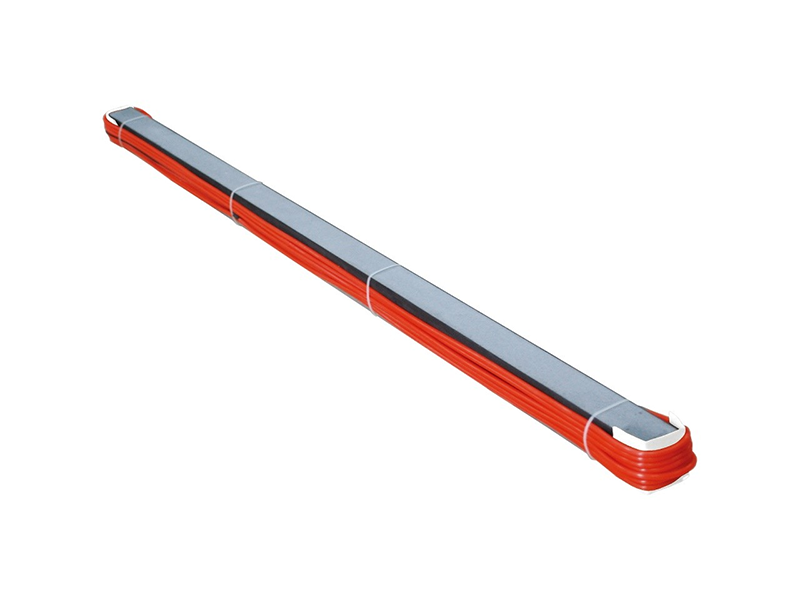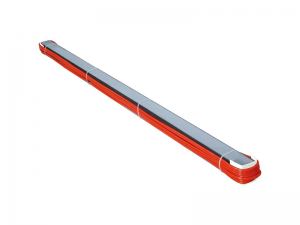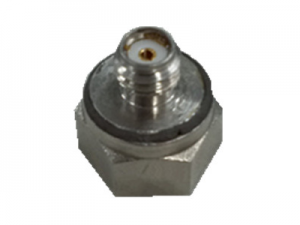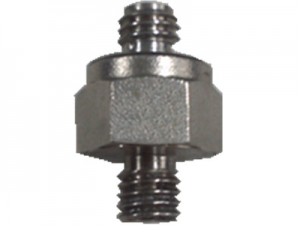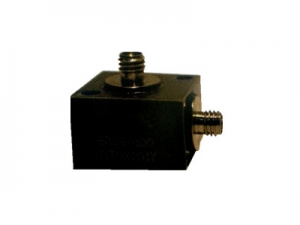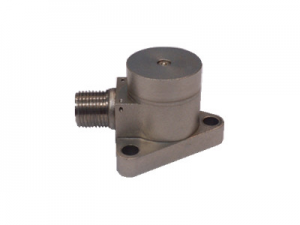Piezoelectric Quartz Dynamic Weighing Sensor CET8312
Stutt lýsing:
CET8312 Piezoelectric Quartz Dynamic Weighing Sensor hefur eiginleika breitt mælisvið, góðan langtímastöðugleika, góðan endurtekningarnákvæmni, mikla mælingarnákvæmni og hár svörunartíðni, svo hann er sérstaklega hentugur fyrir kraftmikla vigtun. Hann er stífur, kraftmikill vigtarnemi byggður á piezoelectric meginreglu og einkaleyfisverndaða uppbyggingu. Það er samsett úr piezoelectric kvars kristal lak, rafskautsplötu og sérstökum geisla burðarbúnaði. Skipt í 1 metra, 1,5 metra, 1,75 metra, 2 metra stærðarforskriftir, hægt að sameina í margvíslegar stærðir umferðarskynjara á vegum, geta lagað sig að kraftmiklum vigtunarþörfum vegyfirborðsins.
Upplýsingar um vöru
Tæknilegar breytur
| Þversniðsstærðir | (48mm+58mm)*58 mm | ||
| Lengd | 1m, 1,5m, 1,75m, 2m | ||
| Vigtunarsvið hjóla | 0,05T til 40T | ||
| Ofhleðslugeta | 150%FS | ||
| Álagsnæmi | 2±5%pC/N | ||
| Hraðasvið | (0,5-200)km/klst | ||
| Verndunareinkunn | IP68 | Útgangsviðnám | >1010Ω |
| Vinnuhiti. | -45 ~ 80 ℃ | Úttakshitaáhrif | <0,04%FS/ ℃ |
| Rafmagnstenging | Hátíðni truflanir hávaða kóax snúru | ||
| Burðaryfirborð | Hægt er að slípa burðarflöt | ||
| Ólínulegt | ≤±2% FS (nákvæmni truflana kvörðunar skynjara á hverjum stað) | ||
| Samræmi | ≤±4% FS (stöðugæða kvörðunarnákvæmni mismunandi staðsetningarpunkta skynjarans) | ||
| Endurtekningasemi | ≤±2% FS (nákvæmni truflana kvörðunar skynjara í sömu stöðu) | ||
| Innbyggð nákvæmnisvilla | ≤±5% | ||
Uppsetningaraðferð

Heildaruppbygging
Til að tryggja prófunaráhrif allrar uppsetningar skynjarans ætti val á staðnum að vera strangt. Lagt er til að stíft sement gangstéttin sé valin sem grunnur fyrir uppsetningu skynjara og endurbæta sveigjanlega slitlagið eins og malbik. Annars getur nákvæmni mælinga eða endingartíma skynjarans haft áhrif.


Festingarfesting
Eftir að staðsetningin er ákvörðuð skal festa festingarfestinguna með götum sem fylgja skynjurunum við skynjarann með lengri bindibandi og síðan er lítið þríhyrnt viðarstykki notað til að stinga í bilið á milli festingarbeltisins og festingarfestingarinnar, þannig að hægt sé að herða það. Ef mannskapurinn er nægur er hægt að framkvæma skref (2) og (3) samtímis. Eins og sést hér að ofan.

Slitlagsgrind
Notaðu reglustiku eða annað verkfæri til að ákvarða uppsetningarstöðu kraftmikilla vigtarskynjarans. Skurðarvélin er notuð til að opna ferhyrndar rifur á veginum.
Ef rifurnar eru misjafnar og litlar hnökrar á brúnum rifanna er breidd rifanna 20 mm meiri en skynjarans, dýpt rifanna er 20 mm meiri en á skynjaranum og 50 mm lengri en skynjarinn. Kapalgróp er 10 mm á breidd, 50 mm á dýpt;
Ef rifurnar eru vandlega gerðar og brúnir rifanna eru sléttar, er breidd rifanna 5-10mm meiri en skynjaranna, dýpt rifanna er 5-10mm meira en skynjaranna og lengd rifanna er 20-50mm meira en skynjararnir. Kapalróp er 10 mm breitt, 50 mm djúpt.
Botninn skal snyrtur, siltið og vatnið í rifunum skal blásið hreint með loftdælunni (þurrkað vel til að fylla fúguna) og efri yfirborð beggja hliða rifanna skal fest með límbandi.

Fúgun í fyrsta skipti
Opnaðu uppsetningarfúguna, í samræmi við áskilið hlutfall til að undirbúa blönduðu fúguna, blandaðu fljótt fúgunni með verkfærum og helltu síðan jafnt meðfram lengdarstefnunni, fyrsta fyllingin í grópnum ætti að vera minna en 1/3 af dýpt grópsins.

Staðsetning skynjara
Settu skynjarann með festifestingunni varlega í raufina sem er fyllt með fúgu, stilltu festingarfestinguna og láttu hverja stoðfestu snerta efra yfirborð raufarinnar og tryggðu að skynjarinn sé í miðju raufarinnar. Þegar tveir eða fleiri skynjarar eru settir upp í sömu rauf, ætti að huga sérstaklega að tengihlutanum.
Efri yfirborð skynjaranna tveggja verður að vera í sama láréttu stigi og samskeytin skal vera eins lítil og hægt er, annars verður mæliskekkjan af völdum. Sparaðu eins mikinn tíma og mögulegt er í skrefum (4) og (5), annars mun fúgan harðna (1-2 klukkustundir af venjulegum hertunartíma límiðs okkar).

Fjarlæging af festifestingu og annarri fúgu
Eftir að fúgan er í grundvallaratriðum læknað skaltu fylgjast með upphaflegum uppsetningaráhrifum skynjarans og stilla það tímanlega ef þörf krefur. Allt er í grundvallaratriðum tilbúið, fjarlægðu síðan festinguna, haltu áfram með seinni fúgun. Þessi inndæling er takmörkuð við yfirborðshæð skynjarans.

Þriðja skipti fúgun
Gætið þess að auka magn fúgu á meðan á þurrkunartímabilinu stendur, þannig að heildarstig fúgusins eftir fyllingu sé aðeins hærra en vegyfirborðið.

Yfirborðsslípun
Eftir að öll uppsetningarfúgan hefur náð herðingarstyrk, rífðu borðið af og slípið rifflötinn og vegyfirborðið, framkvæmið forhleðslupróf með venjulegu ökutækinu eða öðrum ökutækjum til að athuga hvort uppsetning skynjarans sé í lagi.
Ef forhleðsluprófið er eðlilegt er uppsetningin það
lokið.
Uppsetningartilkynningar
5.1Það er stranglega bannað að nota skynjarann utan sviðs og rekstrarhita í langan tíma.
5.2Það er stranglega bannað að mæla einangrunarviðnám skynjarans með háum viðnámsmæli yfir 1000V.
5.3 Starfsfólki sem ekki er fagfólk er stranglega bannað að sannreyna það.
5.4Mælimiðillinn ætti að vera samhæfður við álefni, annars þarf sérstakar leiðbeiningar við pöntun.
5.5 Úttaksenda skynjarans L5/Q9 ætti að vera þurrt og hreint meðan á mælingu stendur, annars er úttakið óstöðugt.
5.6Þrýstiyfirborð skynjarans má ekki slá með barefli eða miklum krafti.
5.7Bandbreidd hleðslumagnarans skal vera meiri en skynjarans, nema það er engin sérstök krafa um tíðnisvörun.
5.8 Uppsetning skynjara ætti að fara fram í ströngu samræmi við viðeigandi kröfur leiðbeininganna til að ná nákvæmri mælingu.
5.9Ef það er sterk rafsegultruflun nálægt mælingu, ætti að gera ákveðnar hlífðarráðstafanir.
5.10Snúra skynjarans og hleðslumagnarans verða að nota kóax snúru með hátíðni truflanir.
Viðhengi
Handbók 1 stk
Hæfni sannprófunar 1 PCS vottorð 1 PCS
Hangtag 1 stk
Q9 úttakssnúra 1 stk
Enviko hefur sérhæft sig í vigtunarkerfum í yfir 10 ár. WIM skynjarar okkar og aðrar vörur eru víða viðurkenndar í ITS iðnaðinum.

